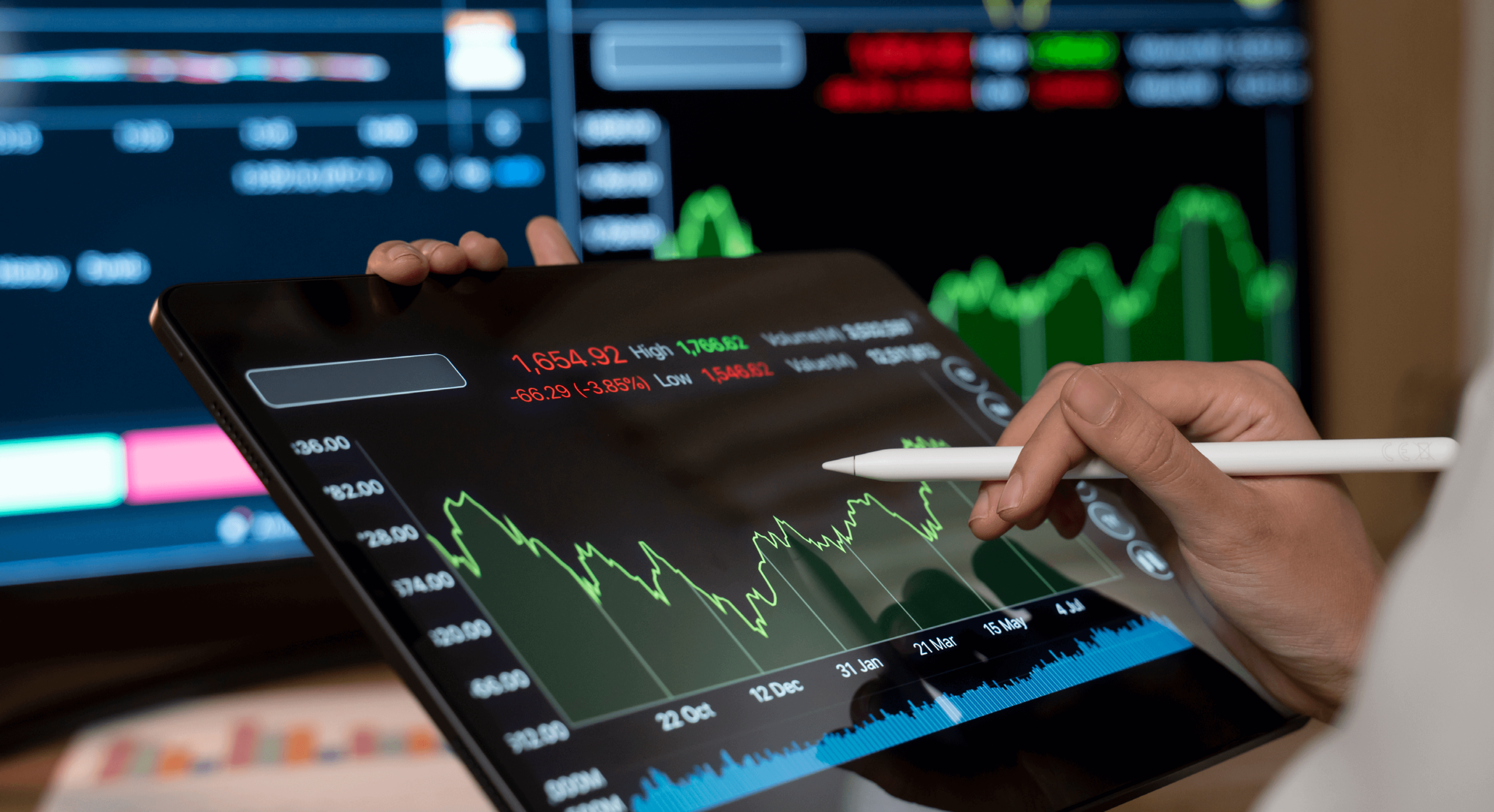
The S&P 500 gained 0.54 per cent on Wednesday, July 17, closing at a record high for the ninth time this year. The index was up 7.31 per cent year-to-date, leaving April’s tariff mayhem in the rear-view mirror.
July’s earnings reports, a key indicator of business health, beat Wall Street’s expectations and added momentum to the rally. It comes after months of better-than-expected economic data in the US, which has so far appeared almost impervious to the much-fretted tariff perils.
The job market remains strong as the economy continues to add jobs at pace, retail sales are increasing, and inflation remains cool. A recent spike in the CPI index from 2.4 per cent to 2.7 per cent was largely the result of rising rents and energy costs, rather than tariffs, Labor Department data showed.
Markets appear indifferent to Trump’s tariff threats, which they now view as sound and fury, signifying nothing. While tariffs are now significantly higher than when Trump assumed office in January, investors are now confident that extreme tariffs of over 100 per cent, which were briefly imposed on Chinese imports, are a negotiating tactic, rather than a long-term trade policy.
Investors are bullish on the Trump administration’s agenda on tax and regulation, which came back into focus as the Big Beautiful Bill was signed into law on July 4. The mammoth piece of legislation introduces massive tax cuts for individuals and corporations, cuts red tape and increases spending on border defence. Analysts say the Big Beautiful Bill will increase household incomes, grow the economy and improve productivity.
All this comes against a backdrop of the unfolding Artificial Intelligence revolution. The technology, which is poised to deliver self-driving taxis, humanoid robots and other functions once consigned to the realms of science fiction, continues to impress, as its potential to help businesses cut costs and increase productivity comes into view. In June, the chipmaker Nvidia became the world’s most valuable company, after reaching a valuation of $4 trillion, thanks to its lead in the AI sector.
So far, the economy has defied recession risks, the markets have beaten headwinds, and US equities have survived the threat of capital flight. But some analysts have warned that markets are not alive to the very real risks which threaten to spoil this reenergised bull run.
US government debt, mountainous as it is, continues to pile up. The national debt is over $36 trillion and growing, with projections showing that the debt is on track to exceed 150 per cent of national GDP by 2055. At the same time, the US dollar, an important tool through which America projects power, is under strain. The greenback remains below 100 on the DXY, after a basket of other currencies gained at its expense, following the fallout from Liberation Day. While the Trump administration might be happy for the dollar to depreciate, eyeing gains to exports and manufacturing, the potential impact on US equities might not be so desirable.
And despite the strength in US equities right now, top fund managers believe that international stocks will deliver stronger returns over the coming years. The MSCI ACWI ex‑USA, an index of most of the world’s stock markets which exempts the US, is up more than 18 per cent year-to-date, clocking more than double the gains of the S&P 500 in percentage terms. A June survey of fund managers found more than half predicted international stocks would be the top-performing asset over the next five years, compared to just 23 who opted for US stocks.
What’s more, the US stock market’s strength relies on several priced-in assumptions. For gains to stay, the course, AI has to live up to bullish expectations, rates must drop, and a full-blown trade war must be averted. The recent 12-day conflict between Iran and Israel was a reminder of how precarious the geopolitical situation remains, and the potential for baked-in assumptions to be rudely interrupted by events. With this in mind, we take a look at the performance of US stocks, analysts’ projections, and some of the risks that some warn could derail the market’s reenergised run.
Strong Earnings Reports and AI Strength Drive Stock Market Gains
So far this year, the gains in US equities have largely been driven by AI. Recent earnings reports showed the technology was a key driver of expectation-beating profits, and boosted investor confidence to help the S&P 500 to beat its ninth record this year.
As per Bloomberg, early results show S&P 500 earnings are on course to increase 3.2 per cent in Q2, beating expectations of 2.8 per cent. Speaking to the outlet, Michael Brown at Pepperstone said:
“All that helps to reinforce the bull case for equities, with this solid underlying economic momentum likely to see earnings growth remain healthy,”
Investors will be watching closely over the coming weeks as Mag 7 firms, including Meta, Amazon and Tesla, release their Q2 reports. Speaking to the FT, Venu Krishna, head of US equities at Barclays, said the bank was bullish:
“We expect [big tech] to beat earnings expectations. The only question is, what is the magnitude of the surprise?”
This bull run might seem to be at odds with trade tensions and the greenback’s rout. But Elyas Galou, investment strategist at Bank of America, said AI and tech were helping to instil confidence in US equities:
“Investors are emotionally bearish on the US, but they are not physically bearish,
“They are bullish on tech, because of AI, but they are bearish on the dollar because of US trade policy and fiscal policy.”
That said, some analysts are warning that tech stocks, and US equities more broadly, look expensive, despite strong earnings. Speaking to Reuters, Ed Clissold, at Ned Davis Research, said AI would need to deliver tangible benefits to the economy so that “maybe the valuations would be justified because the earnings growth the next few years could be substantial,” adding “a lot of good news is priced into stocks at these levels.”
Investors are divided on whether these high valuations will precipitate a drawdown or a catch-up. Analysts at Goldman Sachs are bullish over the prospect of interest rates resuming in the Autumn, which, along with America’s economic resilience, could continue to put upward pressure on valuations.
Others, though, think current premiums herald a correction. Morningstar’s chief US market strategist, Dave Sekera, is among them. In a recent analysis, he highlighted how ‘From a valuation perspective, growth stocks have rarely traded at such high premiums as they are now…The last two times this occurred—in 2022 and ahead of the AI-driven selloff early this year—it was followed by a market pullback.’
Is The Stock Market Headed for a Correction?
Currently, US stocks are more than 20 per cent up from the turmoil of Liberation Day, and over 7 per cent year-to-date. AI optimism, strong economic data and a bumper earnings season have helped to charge gains. But some analysts think there are latent threats which continue to pose a danger to this bull run.
In a July analysis, analysts at US Bank warned of “choppy waters ahead” and said investors should be prepared for further volatility. Analysts at the bank note economic data remains healthy, which supports equities, but warned that the full impact of Trump’s tariffs might not yet have become clear.
They also point toward economic projections, which in recent months have downgraded US growth, but said “there aren’t signs that a recession is on the horizon,” but the bank warned that “Tariff policy will remain a key issue that could influence the market’s direction.”
That isn’t to say the stock market won’t continue to post gains – institutional investors are upgrading their stock market outlooks and increasingly see modest growth this year – but the picture remains uncertain.
In a recent article, Trevor Jennewine, writing for the Motley Fool, set out some of the risks to uninterrupted growth, which include growing national debt and tariff headwinds:
“While several Wall Street analysts have upwardly revised their year-end targets for the S&P 500, the median forecast still suggests the stock market will trade sideways through year-end. Yet, the possibility that tariffs are more aggressive than anticipated is a source of downside risk.
“Also, concerns about the “big, beautiful bill” could lead to higher Treasury yields, which would likely siphon money away from the stock market.”
But those risks haven’t precluded Goldman Sachs from predicting that the S&P 500 will beat expectations this year, and the bank now forecasts the index will reach 6,600 by the end of 2025 and 6,900 within 12 months, compared to 6,297 today (July 18), a potential implied upside of 4.8 per cent. Commenting, analysts at the bank said tariff headwinds had been underwhelming and firms had strategies in place to offset costs.
However, the road toward those potential gains might not be a smooth one, with the analysts noting “Extremely narrow breadth makes it likely that the next few months will be characterised by either a ‘catch down’ by the recent market leaders or a ‘catch up’ by recent laggards,”.
Stock Market Forecast: July 2025 Outlook and Risks
Currently, many analysts believe that the rally will persist through the remainder of 2025 and into next year.Goldman Sachs, for example, now forecasts the S&P 500 at roughly 6,900 in 12 months. Earlier this month, Bank of America’s team also raised its target to 6,300, which, while in line with today’s prices, is notable for being among several upgrades issued in recent weeks. The direction of travel is toward renewed, though somewhat muted, optimism.
In Goldman’s view, S&P earnings should still grow ~7 per cent in both 2025 and 2026, and its model now assumes three rate cuts starting in September. In July, analysts at Morgan Stanley said that actual 2025 profits might exceed consensus by about $9 per share, which would ease valuation pressures.
However, despite strong economic data out of the US, Fed officials have already trimmed their 2025 GDP forecast to about 1.4 per cent, an indication that they expect tariffs to weigh on growth in the coming months. The IMF and OECD also downgraded their growth forecasts for the US economy earlier in the year. Whether those predictions will hold true remains to be seen, but right now it is clear economists think US growth will persist in a subdued form.
Analysts also warn that the market is extremely narrow: the “Magnificent Seven” tech giants have driven nearly all of the rally, leaving the median S&P 500 stock far below its highs. With volatility ahead, Morgan Stanley’s Mike Wilson predicts a 5 to 10 per cent near-term pullback as tariff costs hit profits, but he sees it as a buying opportunity if earnings stay resilient.
Stock market forecast:
With healthy profits and anticipated Fed rate cuts, many models put the S&P around the mid-6000s by mid-2026 – but many of those forecasts, which came in the wake of Liberation Day, may already be looking dated in light of recent economic performance and AI strength.
The most recent forecasts assume modest further gains for the US stock market, reflecting expected mid-single-digit returns, as sentiment has taken a more bullish turn in recent weeks.
July has seen Goldman Sachs, Bank of America, and Morgan Stanley raise their end-of-year forecasts for the S&P 500 to 6,600, 6,300, and 6500, respectively. This implies modest single‑digit upside from current levels, suggesting a cautiously bullish trend punctuated by intermittent pullbacks as valuation pressures and policy uncertainties persist.
While the outlook is leaning toward optimism, they come with caveats: JPMorgan’s Jamie Dimon warns markets may be under‑pricing the risk of higher US interest rates, and Bank of America’s July survey shows 81 per cent of strategists expect one or two rate cuts by year‑end—but not before pockets of volatility emerge. With tech‑driven gains narrowing breadth and geopolitical flashpoints unresolved, the stock market forecast for late 2025 is one of potential modest upside with intermittent corrections—bullish, yet tempered by caution.
